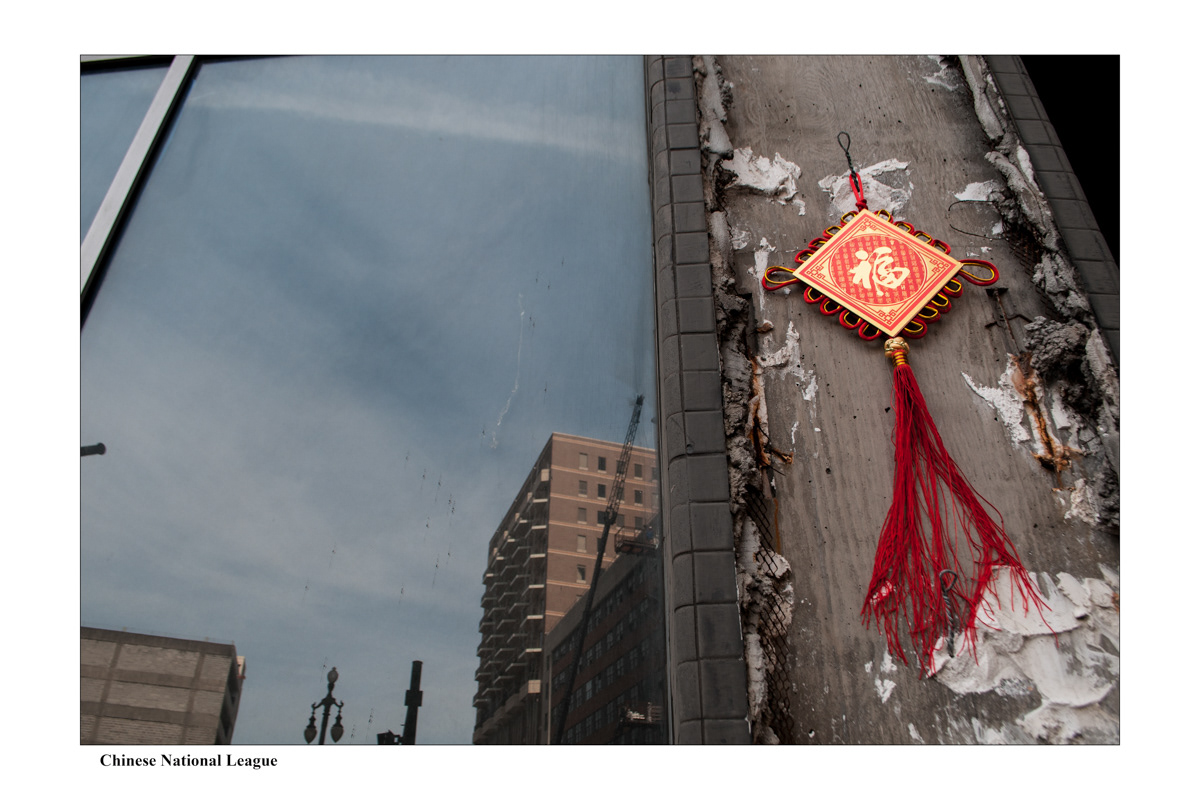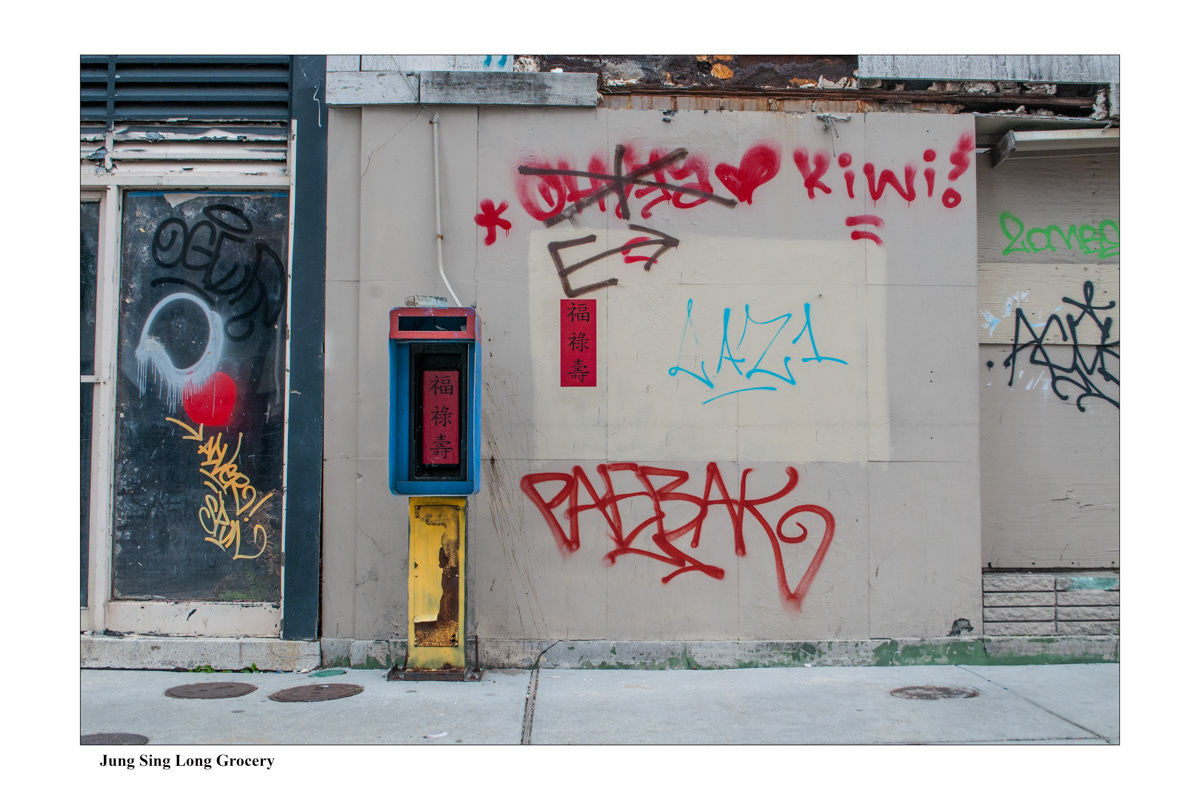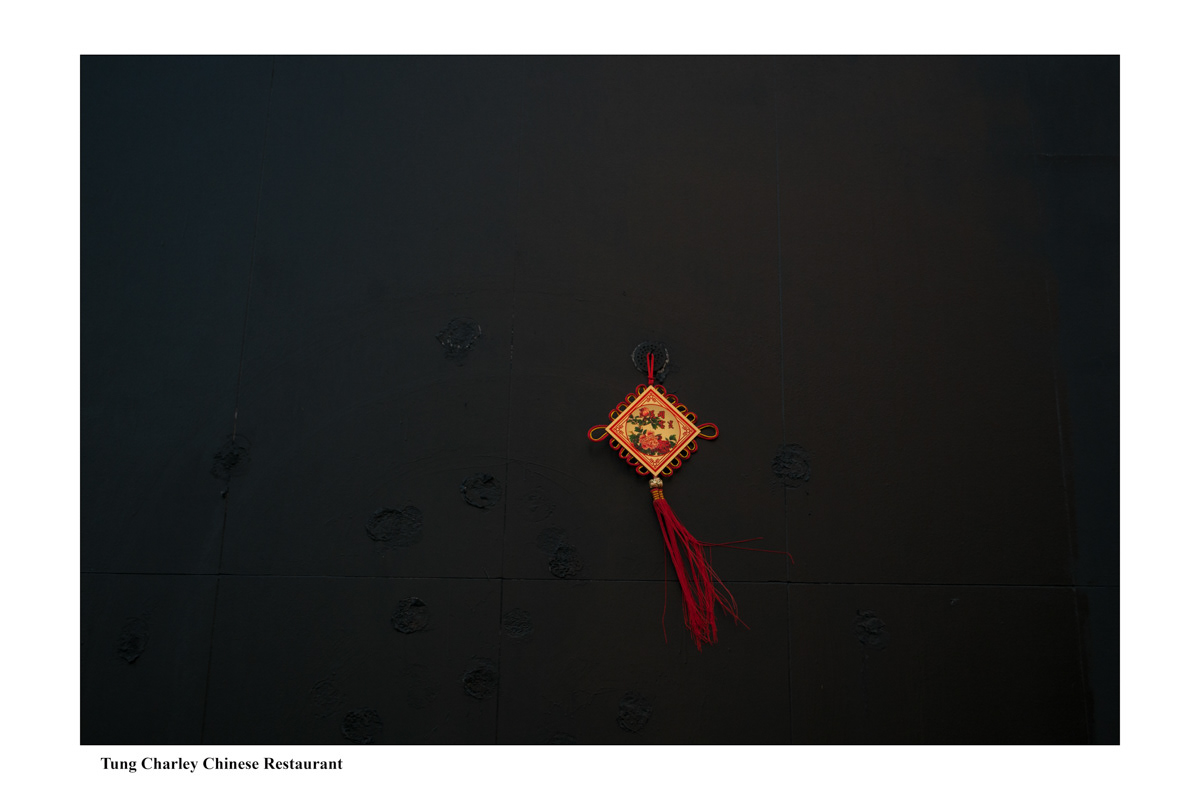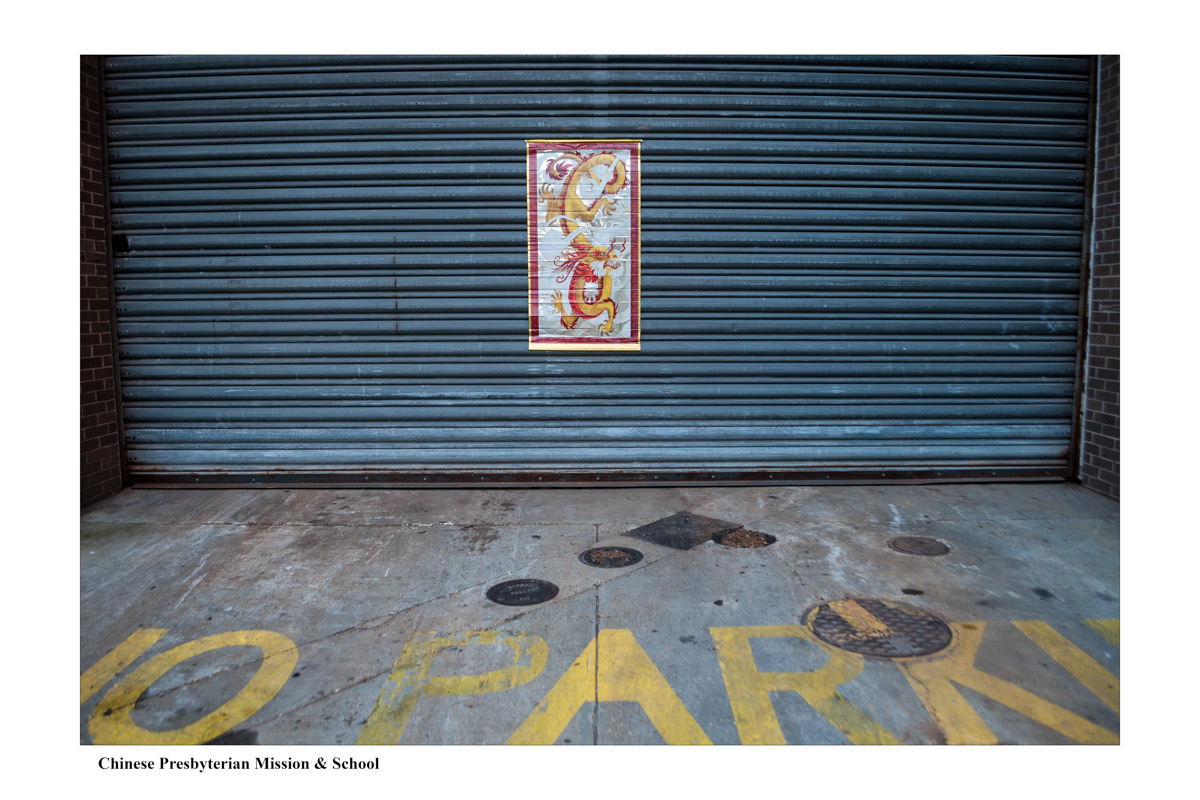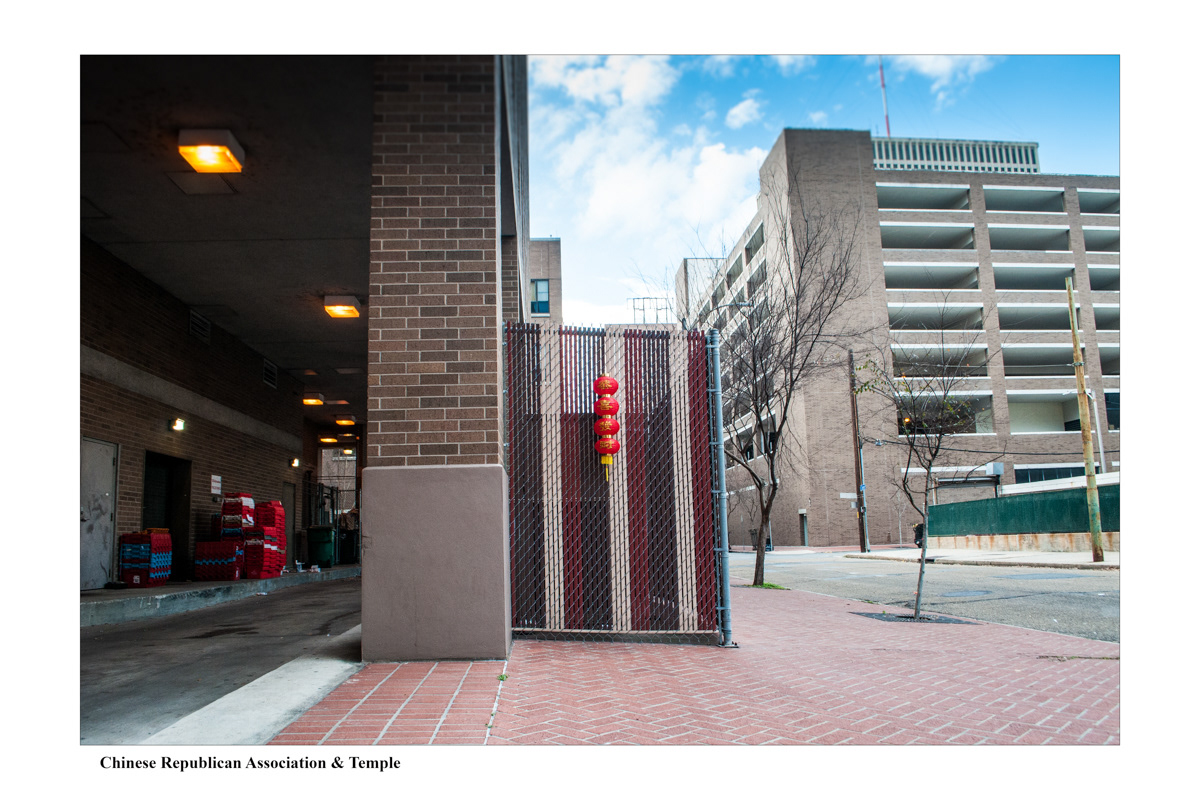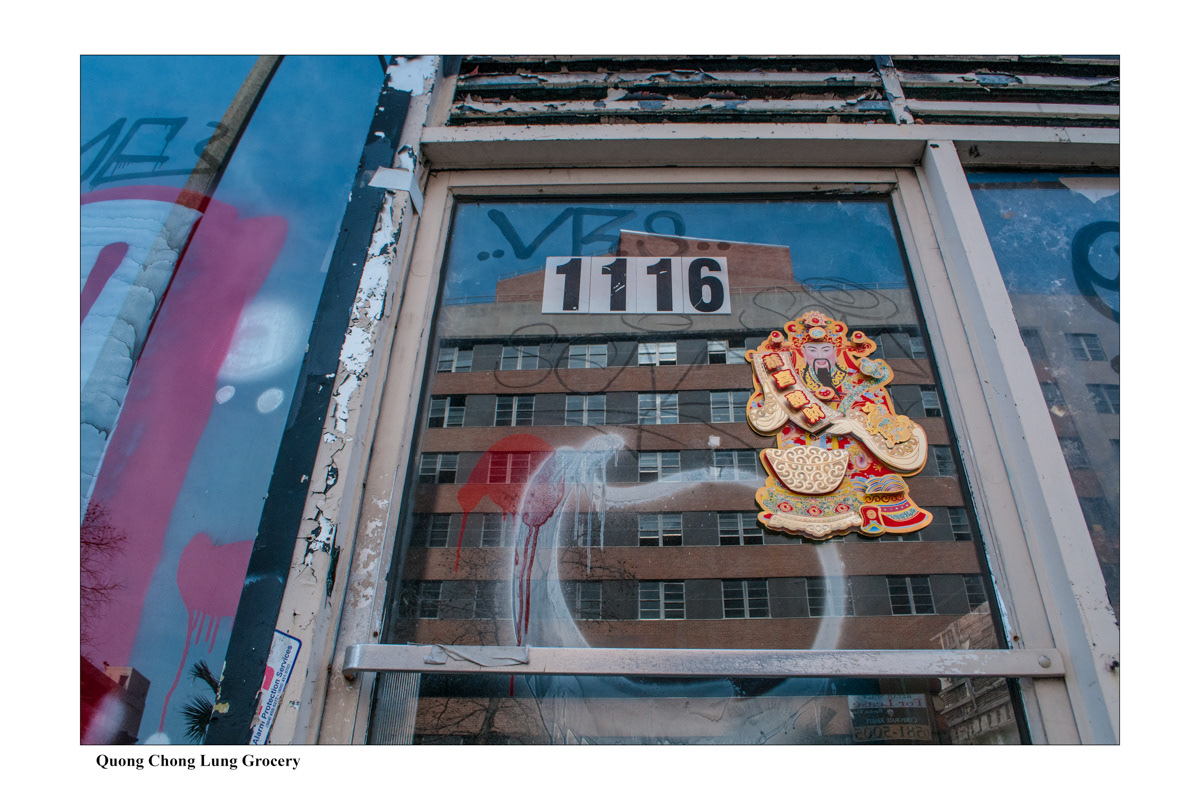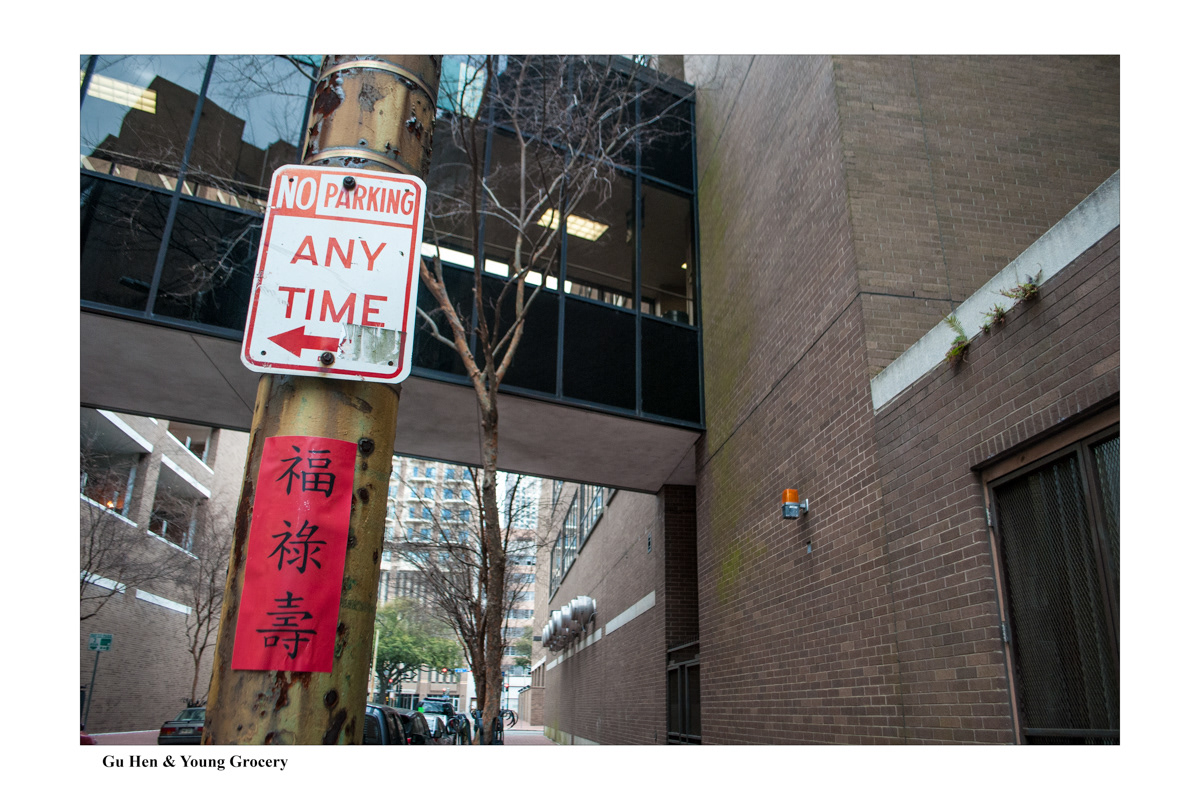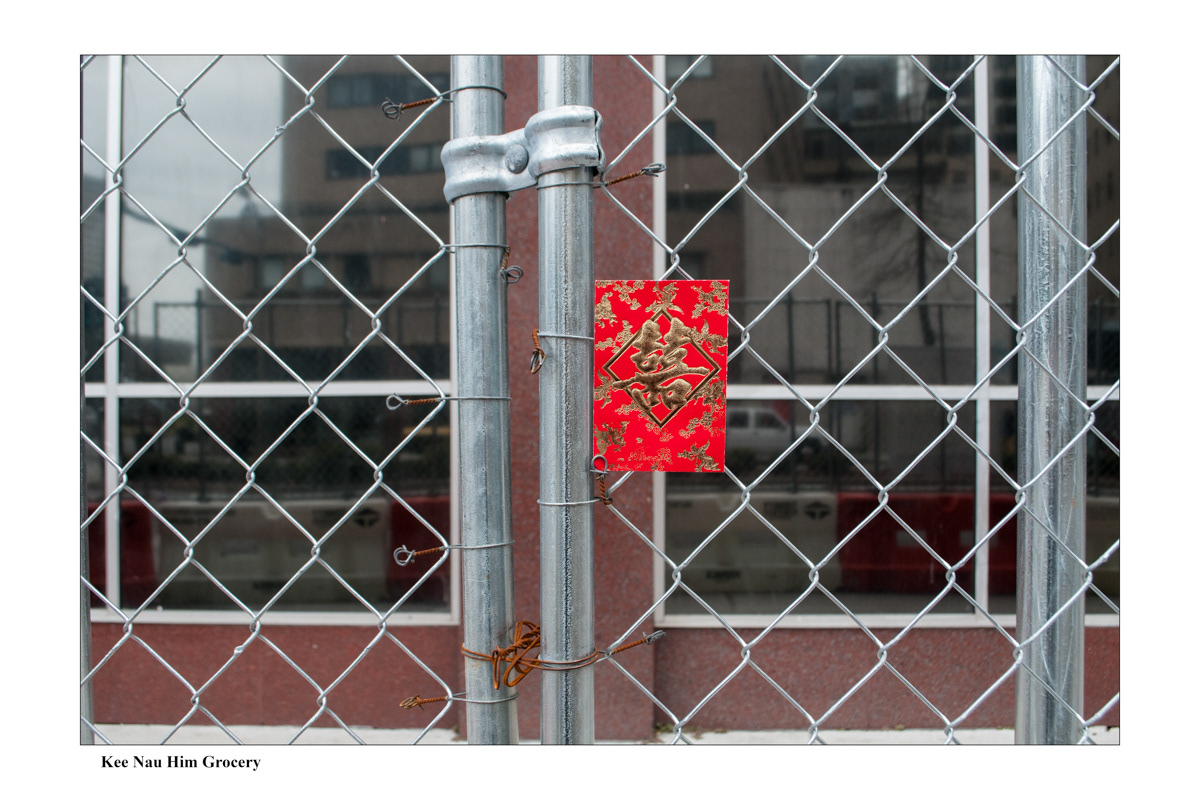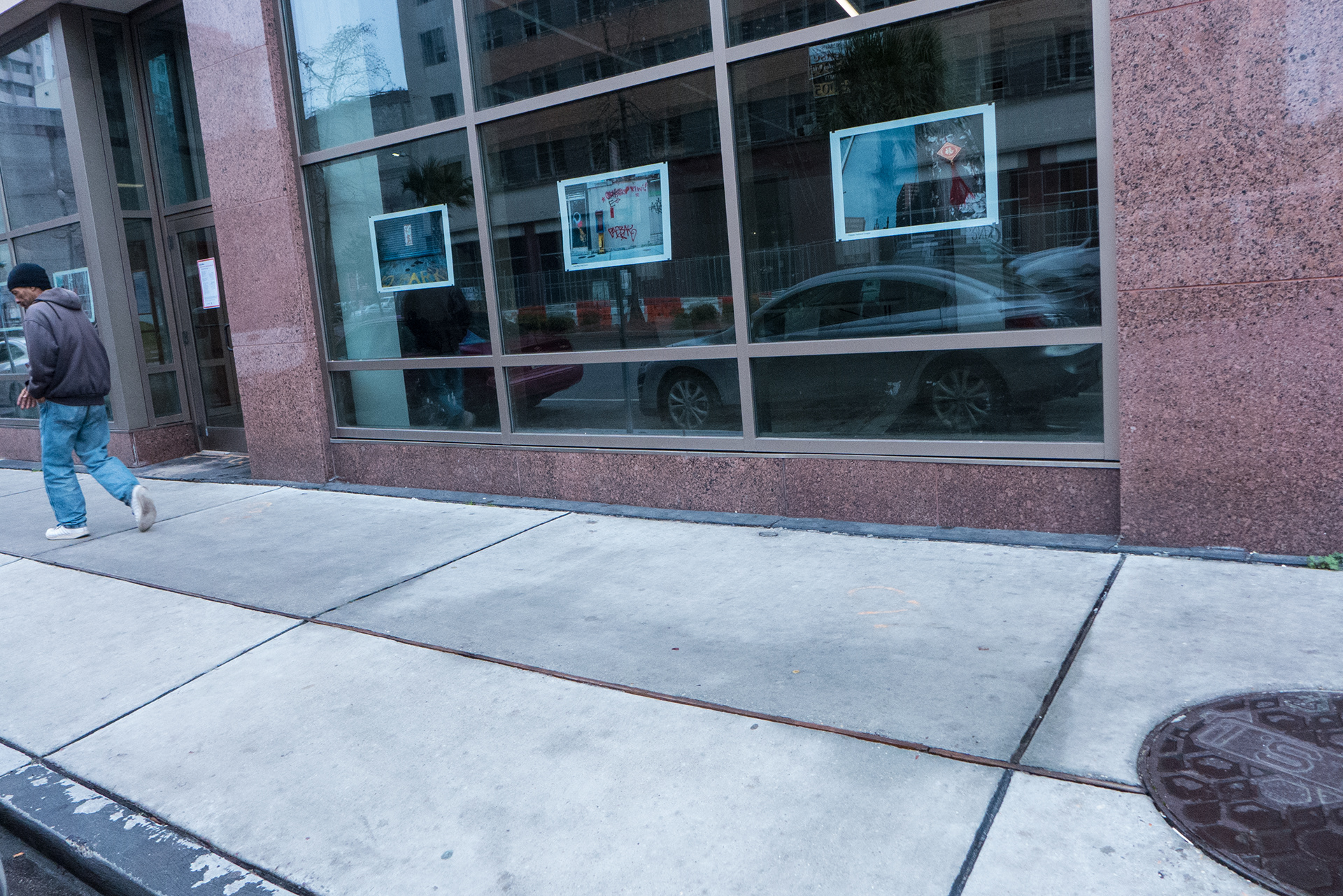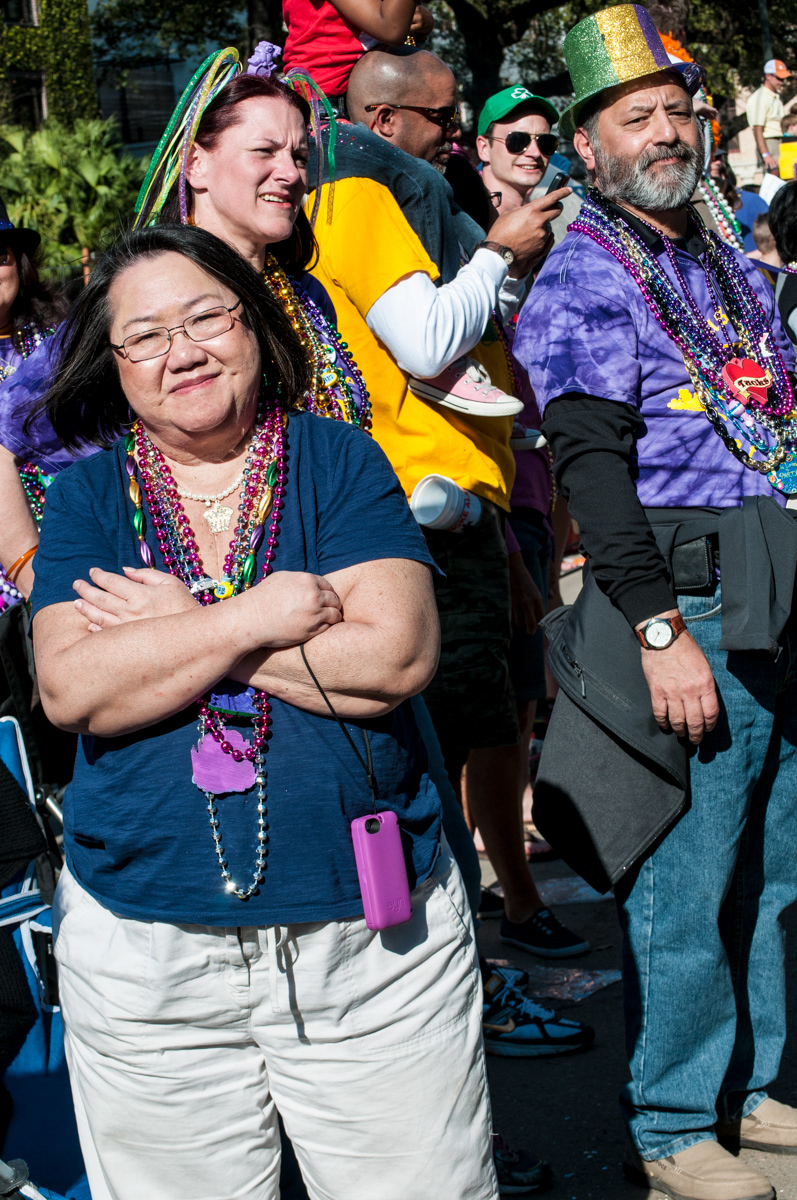CBD (Chinese Business District) inserted visual memory into the built environment of what was once New Orleans’ Chinatown. From the 1880s through the 1930s, the largest Chinatown in the southeastern United States was scattered over several blocks in what became NOLA’s Central Business District (CBD). Almost all the buildings from this time are gone, and almost no photographs of them exist. Most New Orleanians have no idea what was once there.
During the Chinese New Year season of 2015, I sought to excavate the memory of this forgotten place. Using the research of geographer and project partner Richard Campanella as a guide, I installed New Year decorations on sites that were once part of Chinatown. The installations, the photographs created of them and the subsequent on-site exhibit of those photographs reference the layers of lived experience that form the bedrock of a city: a unique cultural enclave, urban development, urban decay, and then urban development once again.
During the Chinese New Year season of 2015, I sought to excavate the memory of this forgotten place. Using the research of geographer and project partner Richard Campanella as a guide, I installed New Year decorations on sites that were once part of Chinatown. The installations, the photographs created of them and the subsequent on-site exhibit of those photographs reference the layers of lived experience that form the bedrock of a city: a unique cultural enclave, urban development, urban decay, and then urban development once again.
Accompanying this exploration of the built environment was a portrait series engaging with the legacy of NOLA’s Chinatown: a small but close-knit Chinese American community, many descended from the immigrants who built this first Chinese American business district. The community is anchored by the Chinese Presbyterian Church in the suburb of Kenner, which began as a mission in Chinatown in 1882. With no built history of the neighborhood remaining, this community is both its living past and its vital, very New Orleanian present.
The project culminated in a storefront exhibition and a public presentation. The presentation was attended by over 100 people, including many members of the Chinese Presbyterian Church.
CBD (Chinese Business District) was created in partnership with Richard Campanella, professor of geography at Tulane School of Architecture. The project drew upon his extensive research, including his map identifying the landmarks of NOLA’s Chinatown in 1916.
CBD (Chinese Business District) was made possible by A Studio in the Woods’ Flint and Steel Residency.
